
This resource from the New York Times includes a variety of lessons, ideas, and resources to teach students to new vocabulary.
- Provider:
- New York Times
- Author:
- NY Times Learning Network
- Date Added:
- 06/24/2019

This resource from the New York Times includes a variety of lessons, ideas, and resources to teach students to new vocabulary.

In this lesson, students will analyze Orwell’s carefully chosen words, details, repetitions, and characterizations in these first few pages, students can construct a strong understanding of some of the key features of this society that will give them a solid framework for comprehending the rest of the novel.

In this CCSS lesson, students will explore this story through text dependent questions, academic vocabulary, and writing assignments.

This resource accompanies our Rethink 8th Grade ELA course. It includes ideas for use, ways to support exceptional children, ways to extend learning, digital resources and tools, tips for supporting English Language Learners and students with visual and hearing impairments. There are also ideas for offline learning.

This parent guide supports parents in helping their child at home with the 8th grade ELA content.

There is no one poem that represents the experience of African Americans in the United States, yet the history of racism in this country is seared deeply into the lives of many African Americans. “The Weakness” by Toi Derricotte recounts an experience with racism through the eyes of a young, light-skinned African American girl going shopping with her grandmother in a department store in 1945. The poems in The African American Experience offer a number of perspectives from African American poets that add a rich complexity to students’ perceptions of African American lives.
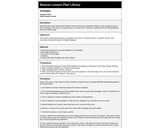
In this lesson, students will learn about relationships between words and will then be expected to figure out the missing word for a list of analogies.

I have used this project as a summative assessment at the end of the school year for many years across two grade levels (6th and 8th). It has taken multiple formats as my students choose the medium that they utilize.

Students use Shakespeare's Secret, a featured title on the Teachers' Choices Booklist (International Reading Association, 2006), as a springboard to exploration of the controversy regarding the authorship Shakespeare's works. The novel makes liberal use of the historical details surrounding William Shakespeare's life, and exposes students to the possibility raised by some theorists that Edward de Vere, Earl of Oxford, was the true author of the works that have long been attributed to the Bard. Students explore the historical references in the novel and generate questions for further research. As they research these questions on suggested websites, they organize their findings with the help of the ReadWriteThink Notetaker. Then they work in small groups to create and present short dramatic skits that creatively connect the novel with the historical facts.
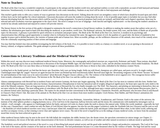
This is a collection of discussion questions and activities to supplement The Book of the Dun Cow by Walter Wangerin Jr.

Students become novice lexicographers as they explore recent new entries to the Oxford English Dictionary (OED), learn the process of writing entries for the OED, and write a new entry themselves. Students will follow up their entry with a persuasive essay and a competition in which the strongest contender for the title of New Word is chosen. Extensions will offer students a chance to evaluate old lists of "new words" and discuss the power dynamics of dictionaries.

In this lesson, students draw pictures to illustrate the meaning of the word and improve vocabulary skills.
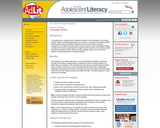
A concept sort is a strategy used to introduce students to the vocabulary of a new topic or book. Teachers provide students with a list of terms or concepts from reading material. Students place words into different categories based on each word's meaning. Categories can be defined by the teacher or by the students. When used before reading, concept sorts provide an opportunity for a teacher to see what his or her students already know about the given content. When used after reading, teachers can assess their students' understanding of the concepts presented.

A collection of worksheets for various student levels to help define unfamiliar vocabulary in contextual readings. (Note: scroll down to bottom of page for worksheet links to grades 6-12.)

The following unit incorporates multimedia and classroom activities to encourage students to explore and interact with poetry by first writing letters to important historical poets as practice for writing letters to the Academy of American Poets Board of Chancellors, a group that represents poetry in America at its best.
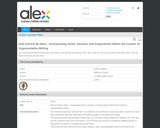
Students will be taught the "drill skill and kill" method to be used on grammar concepts within an argumentative paper.

This story is set in a Tennessee peach orchard on the night before the Civil War battle of Shiloh. A young drummer briefly considers staying behind when the fighting begins. Then a man walks by and stops to talk, and the boy discovers that this man is his general. From their discussion, the boy arrives at a new understanding about his role in the battle to come. In this CCSS lesson, students will explore this story through text dependent questions, academic vocabulary, and writing assignments.
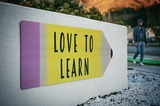
As a way to support teachers with English Language Arts (ELA) instruction during the pandemic, the NCDPI ELA team created choice boards featuring standards-aligned ELA activities.The intended purpose of these choice boards is to provide a way for students to continue standards-based learning while schools are closed. Each activity can be adapted and modified to be completed with or without the use of digital tools. Many activities can also be repeated with different texts. These standards-based activities are meant to be a low-stress approach to reinforcing and enriching the skills learned during the 2019-2020 school year. The choice boards are to be used flexibly by teachers, parents, and students in order to meet the unique needs of each learner.Exploration activities are provided for a more self-directed or guided approach to independent learning for students. These activities and sites should be used as a way to explore concepts, topics, skills, and social and emotional competencies that interest the learner.
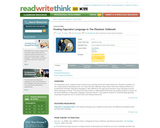
This lesson provides hands-on differentiated instruction by guiding students to search for the literal definitions of figurative language using the Internet. It also guides students in understanding figurative meanings through the use of context clues and making inferences.

This speech, presented as an address in 1927 to the mayor of Chicago, William Hale Thompson, sought to reform the stereotypical image of American Indians in history textbooks and classes. In this CCSS lesson, students will explore this history through text dependent questions, academic vocabulary, and writing assignments.